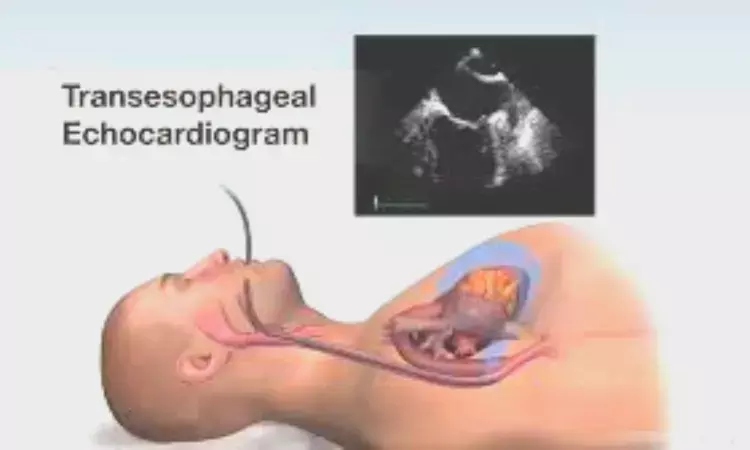- Home
- Medical news & Guidelines
- Anesthesiology
- Cardiology and CTVS
- Critical Care
- Dentistry
- Dermatology
- Diabetes and Endocrinology
- ENT
- Gastroenterology
- Medicine
- Nephrology
- Neurology
- Obstretics-Gynaecology
- Oncology
- Ophthalmology
- Orthopaedics
- Pediatrics-Neonatology
- Psychiatry
- Pulmonology
- Radiology
- Surgery
- Urology
- Laboratory Medicine
- Diet
- Nursing
- Paramedical
- Physiotherapy
- Health news
- Fact Check
- Bone Health Fact Check
- Brain Health Fact Check
- Cancer Related Fact Check
- Child Care Fact Check
- Dental and oral health fact check
- Diabetes and metabolic health fact check
- Diet and Nutrition Fact Check
- Eye and ENT Care Fact Check
- Fitness fact check
- Gut health fact check
- Heart health fact check
- Kidney health fact check
- Medical education fact check
- Men's health fact check
- Respiratory fact check
- Skin and hair care fact check
- Vaccine and Immunization fact check
- Women's health fact check
- AYUSH
- State News
- Andaman and Nicobar Islands
- Andhra Pradesh
- Arunachal Pradesh
- Assam
- Bihar
- Chandigarh
- Chattisgarh
- Dadra and Nagar Haveli
- Daman and Diu
- Delhi
- Goa
- Gujarat
- Haryana
- Himachal Pradesh
- Jammu & Kashmir
- Jharkhand
- Karnataka
- Kerala
- Ladakh
- Lakshadweep
- Madhya Pradesh
- Maharashtra
- Manipur
- Meghalaya
- Mizoram
- Nagaland
- Odisha
- Puducherry
- Punjab
- Rajasthan
- Sikkim
- Tamil Nadu
- Telangana
- Tripura
- Uttar Pradesh
- Uttrakhand
- West Bengal
- Medical Education
- Industry
Contrast agent use improves aortic valve evaluation during echocardiography: Study

USA: A team of US researchers have recommended using a contrast agent to improve the Doppler profile to obtain a more accurate measurement of the aortic valve area for surgical aortic valve replacement when evaluating the aortic valve with trans-esophagal echocardiography (TEE).
The study's findings, published in the Journal of Cardiothoracic and Vascular Anesthesia on February 21, 2023, showed significant discrepancies between echocardiographic measures that did or did not use contrast, which could impact surgical strategies concerning the aortic valve in the heart.
Aortic valve stenosis severity is classified by aortic valve measurements, including area evaluation via transesophageal echocardiography or transthoracic echocardiography (TTE). However, there is a disaccord between the two methods; TEE "tends" to have lower maximum velocities and average and peak gradient measures than those acquired during preoperative TTE examinations. This disaccord could lead to the aortic stenosis' severity and ultimately affect the surgical plan.
Against the above background, Zachary A. Haas from Jacobs School of Medicine and Biomedical Sciences and colleagues examined the level of agreement between the contrast and non-contrast methods of aortic valve sizing during intraoperative TEE.
The study included thirty patients undergoing surgical aortic valve replacement for a stenotic valve at a tertiary hospital.
The researchers reviewed Doppler studies of 30 consecutive patients undergoing aortic valve replacement wherein a contrast agent was provided (perflutren lipid microsphere). The velocity-time integral readings and the peak/mean aortic valve gradients were measured through the aortic valve and the left ventricular outflow tract before and after the contrast agent's administration. Then, the aortic valve area was calculated using both methods. The bias and the level of agreement between the two processes were examined.
The authors reported the following findings:
- When a contrast agent was not used, the aortic valve area was overestimated by 0.26 cm2 than those measured by transthoracic echocardiography.
- TEE measurements were similar to those obtained by TTE by using a contrast agent.
- The mean and peak aortic valve gradients were underestimated by 11 and 19 mmHg, respectively.
- Contrast addition did not impact the pulse-wave Doppler readings of V1 velocity of the left ventricular outflow tract.
"This significant discrepancy could affect the decision to replace the aortic valve," the researchers conclude. "When evaluating the aortic valve with TEE, the use of a contrast agent is recommended to improve the Doppler profile and to obtain a more accurate measurement of the aortic valve area."
The researchers add, "the study's results need to be validated by larger-sized studies, and future studies could look at fine-tuning the timing and exact dose of the contrast injection."
Reference:
The study "The use of contrast may improve aortic valve assessment during transesophageal echocardiography" featured in the Journal of Cardiothoracic and Vascular Anesthesia. DOI: https://doi.org/10.1053/j.jvca.2023.02.023
Dr Kamal Kant Kohli-MBBS, DTCD- a chest specialist with more than 30 years of practice and a flair for writing clinical articles, Dr Kamal Kant Kohli joined Medical Dialogues as a Chief Editor of Medical News. Besides writing articles, as an editor, he proofreads and verifies all the medical content published on Medical Dialogues including those coming from journals, studies,medical conferences,guidelines etc. Email: drkohli@medicaldialogues.in. Contact no. 011-43720751


